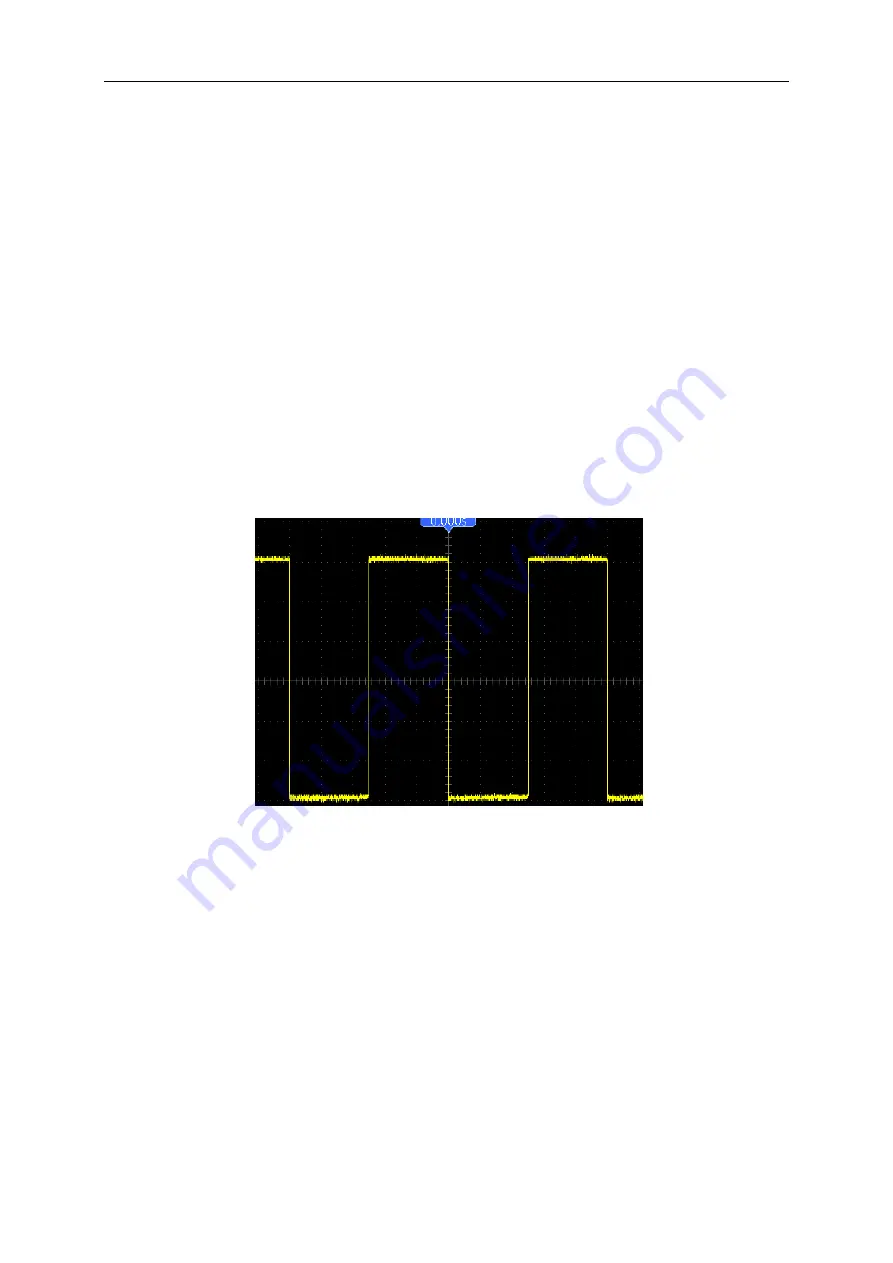
Application Examples
DSO8000E Series HandHeld Oscilloscope User Manual 50
2. Push the AUTO button to trigger a stable waveform display.
3. Push the Single Cycle option button in the Autoset menu and read out the signal pulse width.
4. Push the TRIG MENU button.
5. Select Pulse for the Type option; Select CH1 for the Source option; Click the TRIGGER
LEVEL key to set the trigger level at the bottom of the signal.
6.
Select the When option button and select ‘=’.
7. Push the Set Pulse Width option button. Set the pulse width to the value read out in Step 3.
8. Click the TRIGGER LEVEL key to set the pulse width to the value read out in Step 3.
9. Push the More option button and select Normal for the Mode option. Once triggering on
normal pulses, the oscilloscope can give a stable waveform display.
10.
When option is set to >, < or ≠ and there appear any aberrant pulses that meet the specified
condition, the oscilloscope will trigger. For example, the signal contains such aberrant pulses
as shown below, you may select ‘≠’ or ‘<’ to trigger on the pulse.
As shown in the above figure, you can get a stable waveform display if inputting a square wave at
the frequency of 1KHz, with pulse width set to 500μs.
6.7 Example 7: Triggering on Video Signal
Assume that you are monitoring the video signals of a television to see if they are input normally,
and the video signal is of an NTSC system. You can get a stable display by using the video trigger.
Triggering on Video Fields
To trigger on the video fields, follow the steps below.
1. Push the TRIG MENU button to see the Trigger menu.
2. Push F1 to select Video for the Type option.






























